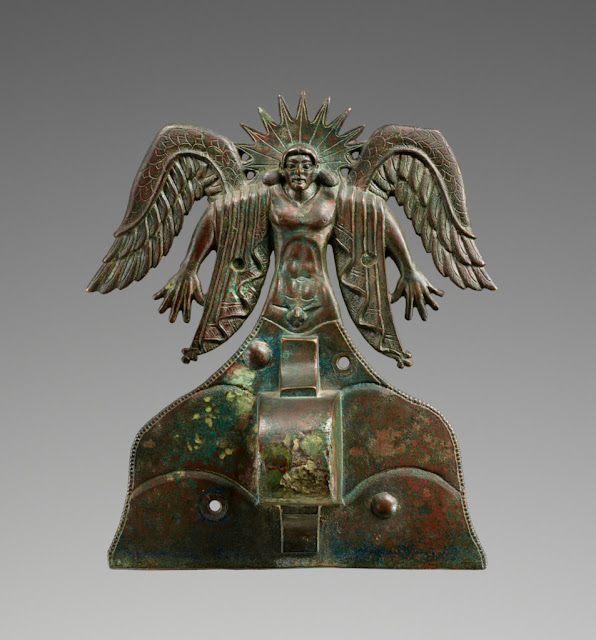Usil: Etruscan God of the Sun
Usil, the Etruscan god of the sun, is equated with the Greek and Roman Helios/Sol Invictus. Appliques depicting the god usually depict the deity with spread wings and a nimbus of rays surrounding his head which is also adorned with a diadem. On such a plaque obtained by the J. Paul Getty Museum, the figure merges into a broad plate decorated with undulating lines, suggesting the sea from which the sun emerges at daybreak and sinks at dusk.
"Ornamental reliefs such as this functioned as fittings on funeral carts and chariots, which often accompanied the burials of Etruria’s equestrian elite. Probably affixed to the sides of the vehicle, the winged god reflects the imagery of a celestial divinity driving the chariot of the sun across the sky, which was common in Greek and later Etruscan art. The earliest Usil plaque, in the Vatican Museums, was reportedly found at Roma Vecchia between 1760 and 1775 and was illustrated by Francesco Piranesi in 1778. In 1845, four similar plaques were discovered in the Tomb of the Quadriga at Vulci, which preserved the skeletons of horses. Among the appliqués held in the National Etruscan Museum of the Villa Giulia in Rome, the State Hermitage Museum in Saint Petersburg, and other museums, some may belong to that burial. Although displaying slight variations in size, facial features, form of the plate, and position of the rivets, all are associated with a preeminent bronze-casting workshop in Vulci." - J. Paul Getty Museum
Other depictions of the Etruscan god feature Usil rising out of the sea, with a fireball in either outstretched hand, on an engraved Etruscan bronze mirror in late Archaic style and with a halo on Classical style Etruscan mirrors.
While Usil is depicted most often as male, there are also feminine depictions equating Usil with another indigenous Etruscan goddess, Catha, which is often interpreted as having a solar character. Usil is also shown in close association with Thesan, the dawn goddess, something almost never seen with Helios and Eos.








Comments
Post a Comment